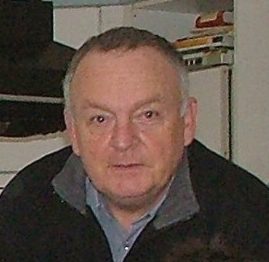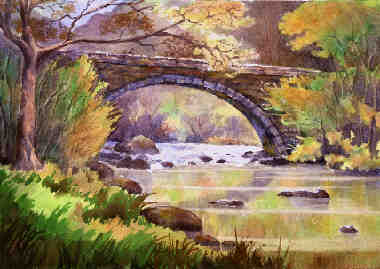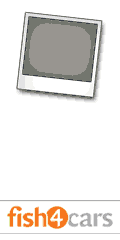Baja Beetle.co.uk
| Site
Index |
| Site Index |
| Mint, 1972 Baja Beetle |
| 5 Series BMW e34 |
| Beetle Photo Gallery |
| Beetle History |
| BMW parts for sale |
| Volkswagen Beetle Parts for sale |
| Latest
News |
| BMW car parts added, for sale |
| New beetle added, PJP |
T1 Restoration Project started, click here |
| Website released, 23/11/2005 |
Robert Martin is a UK Sussex born self-taught Landscape Artist who gave up a successful electronic engineering career to follow his first love of painting. He spent two and a half years in north Wales developing his skills after which he returned to Sussex to live close to the South Downs at Polegate where he drew much of his inspiration.

R C MARTIN
The mediums he uses are Acrylic, Oils and Water colour in his field and studio work.
He has had successful exhibitions in North Wales and Sussex which has led to a number of his works being exported as far as Tasmania and the USA. All the pictures shown on this site and on the linked pages are for sale. If you are interested please contact Robert directly by E-MAIL Or use the links below to see more.......
![]()
FIRLE BEACON SUSSEX
If you are interest in any of the paintings (or Prints) on this web site and would like more information and pricing please use the follow the links above to get in contact with the artist R C Martin. Robert is now resident in Aubins St Vaast, Northern France, where he exploring the picturesque views as potential arts.
OIL PAINTING
Oil paint is a type of slow-drying
paint consisting of small pigment particles suspended in any light carrier
other than water. Oil paints have been used in England as early as the
13th century for simple decoration, but were not widely adopted for artisic
purposes until the 15th century. The most common modern application of
oil paint is domestic, where its hard-wearing properties and luminous
colours make it desirable for both interior and exterior use.
History
The slow-drying properties of organic oils were commonly known to early painters. However, the difficulty in acquiring and working the materials meant that they were rarely used. As public preference for realism increased, however, the quick-drying tempera paints became insufficient. Flemish artists combined tempera and oil painting during the 1400s, but by the 1600s easel painting in pure oils was common, using much the same techniques and materials found today.
Carrier
When exposed to air, vegetable oils do not undergo the same evaporative process that water does. Instead, they oxidize into a dry solid. Depending upon the source, this process can be very slow, and it is this property which gives oil paints their unique characteristics.
This earliest and still most commonly used vehicle is linseed oil, made from the seed of the flax plant. The seeds are crushed and the oil extracted. Modern processes use heat or steam in order to produce a larger volume of oil, but cold-pressed oils are generally considered superior for artistic use. Other sources of carrier oils exist. Poppies, walnuts, and soy beans, are often used as a substitute for the relatively expensive linseed.
Once the oil is extracted additives are sometimes used improve its chemical properties. In this manner the paint can be made to dry more quickly if that is desired, or to have varying levels of gloss. Modern oils paints can, therefore, have complex chemical structures; for example, affecting resistance to UV or giving a suede like appearance
Pigment
The colour of oil paint derives from the small particles mixed with the carrier. Common pigment types include mineral salts such as white oxides: lead, zinc and titanium, and the red to yellow cadmium pigments. Another class consists of earth types, e.g sienna or umber. Synthetic pigments are also now available. Natural pigments have the advantage of being well understood through centuries of use but synthetics have a greatly increased the spectrum available, and many are tested well for their lightfastness.
Usage
The main disadvantage of oils
paints is the relative complexity of use when compared to acrylic paint
or tempera. The carrier is usually highly resistant to water and requires
some sort of solvent such as turpentine or benzene to clean up. These
are toxic and must be handled with care. The pigments may also be dangerous.
Lead is toxic, which is an important reason why it has mainly been replaced
with zinc and titanium. Cadmium can cause cancer with prolonged inhalation.
Both the carriers and the materials used to clean them are also highly
flammable. Paper or rags soaked in pure linseed oil are known to ignite
spontaneously.
References
1. Charles Eastlake, Materials
for a History of Oil Painting, Longman, Longman, Brown, Green, and Longman,
1847.
2. H. Gluck, The Imprermanences of Painting is Relation to Artist's Materials,
Journal of the Royal Society of Arts, Volume CXII 1964
3. Lead in Paint, Dust, and Soil, United States Environmental Protection
agency.
4. Mayer, Ralph. The Artist's Handbook of Materials and Techniques Viking
Adult; 5th revised and updated edition, 1991. ISBN 0670837016

WILLY LOTT'S COTTAGE, SUFFOLK [sold]
WATERCOLOUR PAINTING
Watercolor is a painting technique using paint made of colorants suspended or dissolved in water. Although the grounds used in watercolor painting vary, the most common is paper. Others include papyrus, bark papers, plastics, leather, fabric, wood, and canvas.
History of watercolor painting
Watercolor painting began with the invention of paper in China shortly after 100 AD. In the 12th century the conquering Moors introduced papermaking to Spain and the technology spread to Italy decades later. Some of the oldest paper manufactures include Fabriano, Italy, opened in 1276, and Arches, France, opened in 1492.
The forerunner of watercolor painting in Europe was buon fresco painting — wall-painting using pigments in a water medium on wet plaster. One well-known example of buon fresco is the Sistine Chapel, begun in 1508 and completed in 1514.
The earliest known use of European watercolor painting is by Italian Renaissance painter Raffaello Santi (1483-1520), who painted full-scale cartoons as precursors for tapestry designs.
In Germany, Albrecht Dürer (1471-1528) painted watercolors in the 15th century. The first school of watercolor painting in Europe was led by Hans Bol (1534-1593) and was much influenced by Dürer's creations.
Other famous artists have used watercolor painting to supplement their work with oil paint, including van Dyck (1599-1641), Thomas Gainsborough (1727-1788), and John Constable (1776-1837).
In 18th century Britain, Paul Sandby (1725–1809) was called the father of British watercolor.
Watercolor paint
The broader term for water-based painting media is watermedia. The term watercolor most often to refers to traditional transparent watercolor or gouache (an opaque form of the same paint).
Watercolor paint is made of finely-ground pigment or dye mixed with gum arabic for body, and glycerin or honey for viscosity and to bond the colorant to the painting surface. Unpigmented filler is added to gouache to lend opacity to the paint. Oil of clove is used to prevent mold.
Techniques
Traditionally, watercolor paint is applied with brushes, but it may be applied with other implements in experimental approaches or mixed with other materials (usually acrylic or collage).
The paint is thinned before application to allow for lighter areas within the painting. This transparency provides watercolor its characteristics of brightness, sparkle, freshness, and clarity of color since light has passed through the film of paint and is reflected back to the viewer through the film.
According to a tradition, dating from at least the early 20th century, the white of the paper is the only white used in transparent watercolor. Opaque paint is seldom used for whites or to overpaint.
Watercolor techniques have the reputation of being quite demanding, although they are actually no more demanding than those used with other media. Maintaining a high quality of value differences and color clarity are typically the most difficult properties to achieve and maintain.
The medium is effective in portraiture, figurative art, photorealism, and abstract work, both objective and non-objective. (Kandinsky produced the first non-objective abstract paintings in transparent watercolor around 1913).
Watercolor proponents prize it as a studio medium for its lack of odor and ease of cleanup, and also as a plein air medium for its portability and quick drying.
Fingerpainting originated in China with watercolor paints.

"HALFWAY BRIDGE"-No:48 NORTH WALES
Visist R C Martin's website at http://www.geocities.com/artistrcm/
Web pages built and © by A R Martin E-mail at:
Home-page Robots Tutorials Links E-mail Circuits Events BEAM PIC Microchip Robotics Shop Computers FMM-RobotWars Sponsors Suggested reading Ebay Listings Serial Speed Controllers MicroMouse Walkers Driller-Killer Laptops Excaliber Robot Retox Drill Robot Robot motors Robot Builder Google Robux Project gorobotics Robot Cafe Robotics Solar Navigator PIC Axe Tech Supplies MUTR GSM Control Home Automation RC tracker Baja Beetle VW BMW car parts 5 Series BMW e34 VW T1 Beetle Parts Land Rover challenge Beetle History PJP, the 1973 VW Beetle Mint, 1972 Baja Beetle Site Index T1 Beetle restoration Camper Photo Gallery Beetle Photo Gallery Qtronics Design - Electronics and Firmware Design http://www.speedace.info/qtronics.htm http://www.solarnavigator.net/qtronics.htm http://www.elecdir.com/site/store/23197/index.html http://www.alsrobotics.co.uk/links.html http://www.robotbuilder.co.uk/forum/topic.asp?whichpage=2&TOPIC_ID=861ᶱ www.firmwaredesign.co.uk
A VW enthusiast based in Lewes East Sussex privately runs BajaBeetle.co.uk,
contact A R Martin for details arm@bajabeelte.co.uk
BajaBeetle.co.uk









